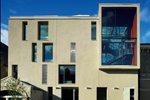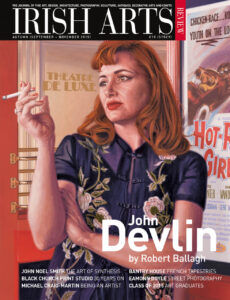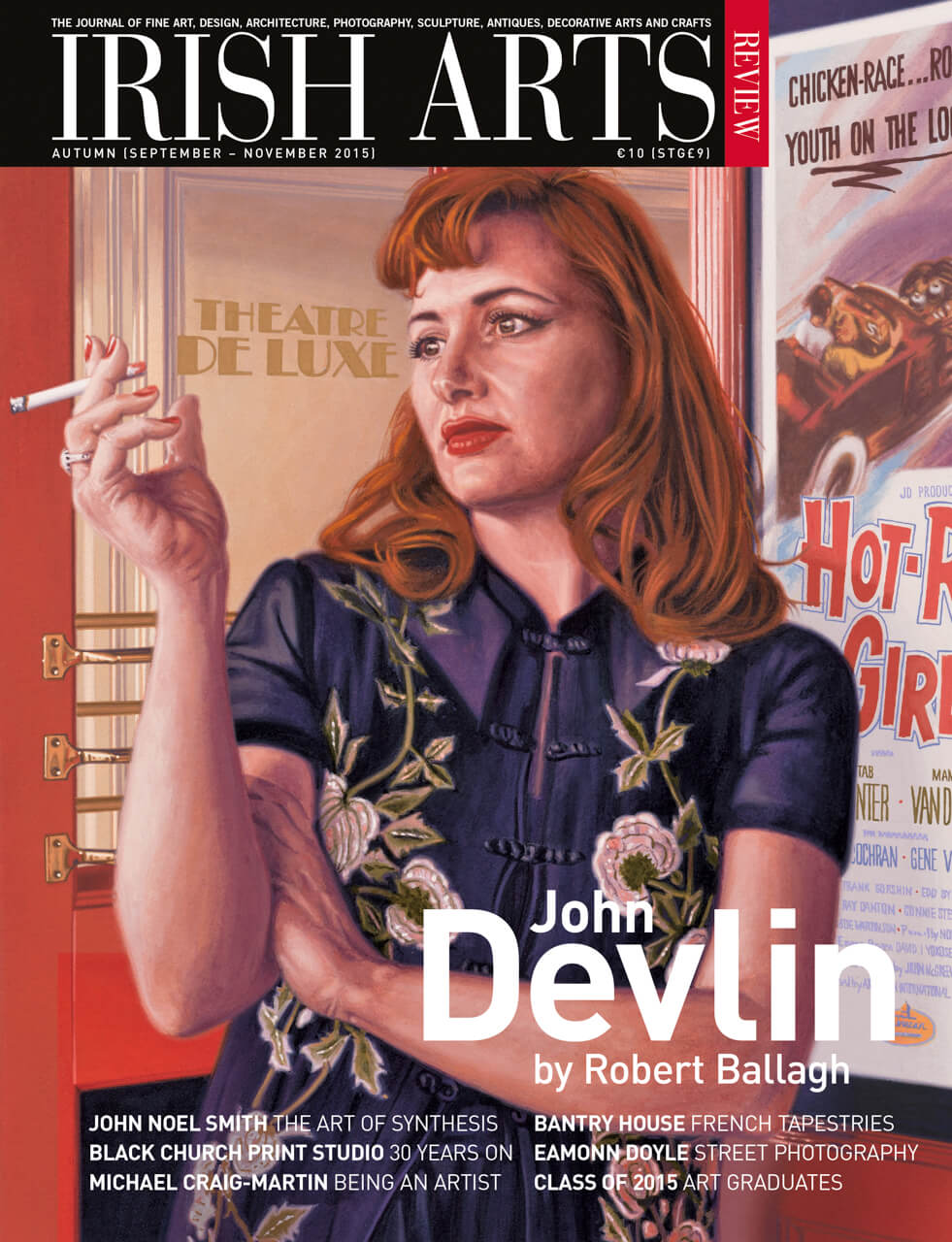

Bridging past and present in projects like Blackrock Further Education Institute, McCullough Mulvin have made a virtue of creating a dialogue between old and new, writes Hugh Campell
The town hall is first to arrive on the scene. The authorship of this neat, Italianate hall, completed in 1865 is in some dispute, but its intent and its impact are not. Into a street of residential and religious buildings it‚Ä® introduces a note of civic importance, cementing the status of the newly established Blackrock township. Forty years later, it is joined by two new partners who, in taking their positions, displace the town hall to one side of a new tripartite composition. The new Carnegie Library now occupies centre stage, flanked by a College of Further Education, which in form and style, is treated as the slightly plainer twin of the original town hall. The library steps forward from both, suggesting that it, rather than the hall, arrived first, but also ensuring that each building reads distinct from its neighbour, maintaining a degree of organizational and volumetric autonomy. In fact, the enlarged development has occasioned some interpenetration between the buildings, with openings in party walls beginning to allow movement across the grain. But on the street, a harmonious civic order prevails (Fig 1). And now, more than one hundred years later, a new volume has joined the ensemble. Alike in scale, tone and proportion to its older neighbours, it is distinguished by its more abstract language and more open demeanour. For good measure, it includes the neighbouring fire-station archway within its reach and draws it into the ensemble. The trio has become a quartet. And to a far greater extent than previous additions, the arrival of this new partner has occasioned a reinvention of the earlier elements, so that each is set in motion in relation to the other. What appears externally as a relatively stable ensemble reveals itself internally as a complex spatial weave, binding together routes and spaces across the full dimensions of the newly extended site.
As set out above, this neat narrative might seem predetermined, but of course it is anything but: neither of the first two episodes could have predicted what would follow. It is the achievement of the latest work, by McCullough Mulvin, to impute a retrospective inevitability to the ensemble. Everything is reconstituted to become part of the current story. The recuperation of the existing has been central to the firm’s modus operandi from the outset. In numerous projects, existing buildings are incorporated into new spatial and material organizations. The engagement is always respectful, but also full-blooded and thoroughgoing. Existing buildings are treated neither as redundant shells on the one hand, nor as precious, inviolable artefacts on the other. Rather they are considered as complex, vital organisms, capable of change. It is assumed of them that they will wish to evolve rather than to atrophy.
At Rush Library, St Maur’s Church undergoes a more radical transformation, its change of function affirmed through the transformation of the spatial order, in which flowing timber planes airily intersect the original solid stone geometry.
In their reinvention of Waterford City Library, for instance, a new block forms an L-shaped plan with the existing limestone building, allowing new raking diagonal routes and views to be opened up. The original doubleheight reading room rediscovers its anchoring presence within the new composition, a role that had been diminished by previous alterations. Now clad in dark timber panels, its original roof timbers exposed and painted white, the space is simultaneously its original self and something new (Fig 4). At Rush Library, St Maur’s Church undergoes a more radical transformation, its change of function affirmed through the transformation of the spatial order, in which flowing timber planes airily intersect the original solid stone geometry (Fig 3). Incisions, additions, subtractions – all are deliberate and precisely judged and each plays a vital role.
Even where a new building enjoys a greater degree of spatial and formal autonomy – as in TCD’s Ussher Library – it consciously establishes itself in relation to its near neighbours, negotiating levels, relationships, lines of sight. Of course such responsiveness might be said to be simply part of the business of any well-mannered architecture: no buildings are without context, all respond in at least a rudimentary way. But in McCullough Mulvin’s architecture, the negotiation between the existing and the new transcends pragmatism to become a guiding philosophy. Thus, in the design process, a considered response to the given supplies the design impulse that resonates right through every stage and every scale of the project. As evidenced by the examples cited, and by many others in their growing canon, this impulse is pursued and resolved in distinct and different ways. At times, the existing fabric determines the spatial and material strategies, at others, the new intervention dictates the terms. But whatever the balance of forces, what they all share is the sense of a new equilibrium being established. The specific strategies of reuse and rehabilitation used in numerous projects over the years form part of a sustained exploration by the architects of the evolution of the Irish built environment. This is an evolution in which the existing must constantly adjust itself to accommodate the new, which in turn must find its place within the given. This reciprocal and cyclical process was rehearsed in seminal publications on archetypal and vernacular Irish forms (A Lost Tradition, 1987) and on the city (Dublin An Urban History, 2007) and was subsequently theorized in the publication Palimpsest, 2014. The original meaning of that term – ‘a manuscript or piece of writing material on which the original writing has been effaced to make room for later writing but of which traces remain’ – became extended to refer to ‘something that has changed over time and shows evidence of that change’ – an interpretation which is then applied to examples from Ireland’s built heritage as well as more recent work. Thus, a contemporary approach is situated within a continuing tradition, and a whole built landscape is understood as mutable and amenable to reinvention over time.
The chief characteristic of the palimpsest-like building complex is that it makes evident work over time. Each phase of alteration and addition leaves its mark without obliterating what has gone before, so that several ages of development are simultaneously available during the immediate experience of visiting and using the building. Often this exposed, frozen temporality, serves as a kind of testament to the protracted and complicated nature of the project itself (in the case of the Blackrock project this included several delays, revisions and restarts). But at a more idealized level, it makes available the whole narrative of a site, connecting past with present. History, rather than being enshrined in homogeneous monuments, is enacted in heterogeneous ensembles.
In architectural discourse, such an approach is often understood as a reaction against the abstraction of high modernism, in which a kind of atemporal purity reigns, unsullied by the specifics of time, space or material. But in fact, many aspects of modernist thinking, particularly ideas of spatial flow, but also material and formal properties, persevere in such projects. One thinks for instance, of Scarpa’s opening of flowing routes through the rooms of Castelvecchio, or of Siza’s pristine forms engaging with the garden and convent at Santiago to generate a new landscape. Accordingly, in Blackrock, the existing forms of the town hall, library and school are absorbed into a new, more open spatial order, achieved through the interpolation of lateral routes. At the same time, new volumetric richness is established through the interleaving and undergirding of floors. Everywhere, the original fabric is recast and encountered in new ways. The main transverse route, repeated at each level, skirts close to the back of the original buildings. Rear facades which would hitherto have been seen only from a distance, or obliquely, are now within touching distance. The material character is revealed through the exposure of a structural element or a swathe of original fabric. Elsewhere, copings and string-courses are incorporated in corridors. More dramatically, the new atrium adjacent to the town hall frames its whole sidewall as if in a display cabinet. On the atrium’s floor, images from the nearby shore are reproduced in magnified close-up. And most dramatically of all, the chief honorific volume of the original town hall – the council chamber – is displaced to a new location on the top floor corner of the new complex. Hitherto enclosed and toplit, its walls are now free to gain shuttered openings which reveal views of the sea and the horizon beyond. In part, of course, these processes of interweaving, overlaying and transposing are necessitated by the various connections and separations demanded by the brief. But the picturesque, sometimes almost surreal recontextualizations that result gain strength from the fact that they are the product, not of whimsical compositional games, but of a precise and thoroughgoing organizational logic.
At every scale – from the individual episode to the overall composition – the same logic applies: the inert block is rendered mobile, brought to new life – sometimes in its totality, sometimes in bits and pieces. It does not seem unreasonable to impute a larger socio-cultural motive to this strategy. Just as the buildings gain new life, so too might their users gain a renewed sense of agency and of confidence. This sense of fellow feeling between a building and its occupants makes intuitive sense, but its rationale is difficult to pursue too far without seeming to confer too great a degree of autonomous agency upon the built fabric, and too great a degree of unthinking compliance upon its living users. In this regard, Bruno Latour’s ‘Actor Network Theory’ has recently proved useful as a theoretical framework which can allow people and buildings be incorporated within a single model of social relations. Latour interprets the field of social relations as something which is continuously being performed, and in which material and semiotic content figures equally in the construction of shared meaning. When this approach extends into architecture, it treats buildings and their components as working in concert with their occupants to produce patterns of behavior, but also systems of meaning and significance. By this reading, every built project becomes a weave of activity in which the differentiation between a space and someone using it, between a route and someone moving along it, and ultimately between the organic and the inorganic is less important than the fact that, together, they have produced this social effect. In the context of Blackrock, the signal effect of the project has been to transform a dim backwater, cut off from the hum of main street, into a thriving public locale. The pale golden stone and render of the facades, lustrous in sunlight, command the wide pavement in front, establishing a truly civic address. Here, the complexities of the internal organization resolve themselves into a street frontage of formal grace. This is a quartet in which each voice acts in concert with the others, producing harmony.
In the context of Blackrock, the signal effect of the project has been to transform a dim backwater, cut off from the hum of main street, into a thriving public locale
In fact it is not a quartet, but a trio, which most immediately comes to mind. Soave Sia Il Vento from Cosi Fan Tutte is esteemed as one of Mozart’s most beautiful inventions. The occasion is the princes’ farewell before they depart for sea. But even as the lovelorn voices of Dorabella and Fiordiligi wish them safe passage, their voices blending airily with Alfonso’s, we understand that he has engineered this situation to his own ends. All is not as it seems, and what is overtly a gentle lament reveals a darker undercurrent. Harmony, in other words, especially when at its most refined, can accommodate myriad subtleties of meaning and of impact. Thus, when McCullough Mulvin’s Blackrock quartet sings of the simple virtues of its situation – a seaside town, a sunlit street, a sparkling horizon – it does so without losing sight of the complicated and fragmented nature of its own gestation, of the site’s longer history and of the many demands there will be upon its rich weave of spaces over the coming years.
‘Soave sia il vento, Tranquilla sia l’onda’
Photography by Christian Richters.
Hugh Campell is Dean and Head of School at UCD School of Architecture.



